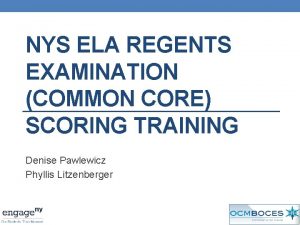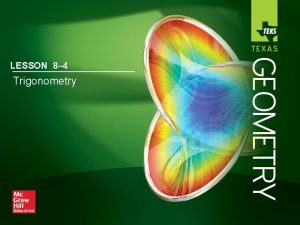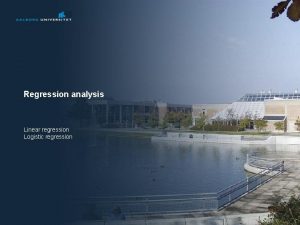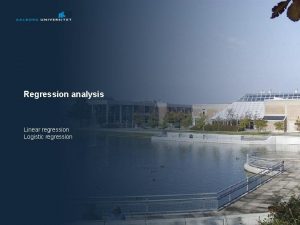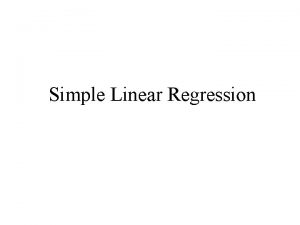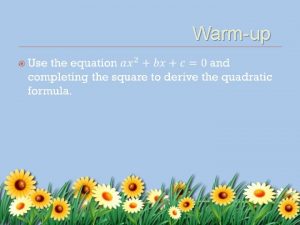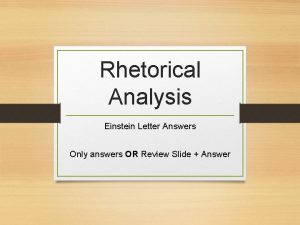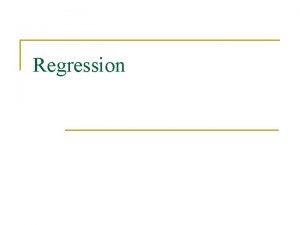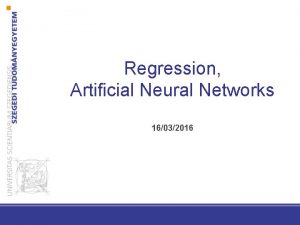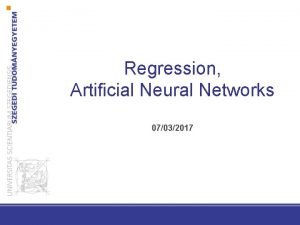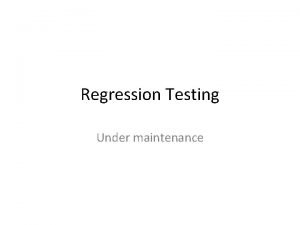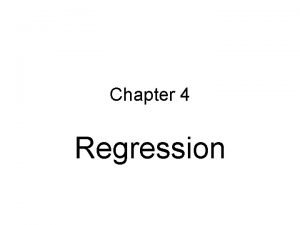Regression Part II Regression analysis Regression analysis answers
















- Slides: 16

Regression Part II

Regression analysis • Regression analysis answers three questions about the relationships among variables – Does an association (relationship) exist between two or more variables? – How strong is the relationship (correlation)? – Is is possible to predict (estimate) the value of the dependent variable if we know the value of the independent variables?

Why bivariate regression is preferable to just correlation • It fits our theories better - sets us up to work towards causation • Allows for prediction - not simply a measure of association • Can control for other potential causes of Y • More flexible – # and type of Xs – functional form - can examine nonlinear relationships

Review from last week • A regression model can best be expressed as an equation.

• = the constant or Y intercept (where the regression line crosses the Y axis) • = the regression coefficient or slope – is the change in Y for a one-unit increase in X • Both and are referred to as the regression coefficients – These values are constant. For any particular straight line, they will remain the same for any value of X and/or Y

• Y = the predicted value of the dependent variable • X = the independent variable • X and Y are variables – They change with each individual case in the sample/population.

Linear Regression Model • In practice, the parameters of the linear regression function are unknown. • The linear regression model uses a method called least squares to estimate the population parameters based on sample data. • For any single fixed value of X, the equation estimates the mean of Y for all subjects in the population having that value of X.

• Models cannot perfectly represent the real world. • We add e (the error term). • One of the goals of developing a regression model is to minimize e – so that your model works as well as possible

Interpreting the regression equation • r 2 - the correlation coefficient – how well does the equation fit the data – the proportion of the variation in the dependent variable that is associated with or explained by the independent variable

Interpreting the regression equation • - the regression coefficient • The size of is determined by the scale on which the original variable is measured. – You can not compare unstandardized ’s – a large simply means the original variable was measured in large units

Interpreting the regression equation • In addition to the value of (a measure of the magnitude of the relationship between two variables), we are also interested in whether or not the relationship is statistically significant. • We determine this using a t test. • Ho : = 0 • t can be found by dividing the sample slope (b) by the standard error of b • Remember the t > 2 rule of thumb

Using regression equation for prediction • Meier/Brudney 17. 17 • Presidential election; key issue inflation • Is the inflation rate related to the % of vote received by candidate of party in power? • If inflation is 8%, predict the vote for the incumbent’s party

Multiple linear regression • In social science, most of the phenomenon in which we are interested are best explained by examining multiple causes or independent variables.

• Often the independent variables are not only related to the dependent variable but also to each other. • In order to tease out the effect of a single IV, we control for or hold constant all other independent variables (at their mean value). • b represents the effect of that IV on the DV while controlling for all other Ivs.

F-ratio • Another measure of statistical significance • Tests the multiple regression equation as a whole • Is the ratio between explained and unexplained variance in the model • Indicates the probability that the regression equation could have occurred by chance

Example • Study by Greg Lewis: regression equation to predict entry grade into the US civil service
 Common core ela regents
Common core ela regents Simple and multiple linear regression
Simple and multiple linear regression Multiple regression formula
Multiple regression formula Survival analysis vs logistic regression
Survival analysis vs logistic regression Logistic regression vs linear regression
Logistic regression vs linear regression Part whole model subtraction
Part whole model subtraction Unit ratio definition
Unit ratio definition Brainpop ratios
Brainpop ratios Part by part technical description example
Part by part technical description example Sorry bar
Sorry bar The phase of the moon you see depends on ______.
The phase of the moon you see depends on ______. Minitab adalah
Minitab adalah 21 cfr part 11 -- questions and answers
21 cfr part 11 -- questions and answers Computers part of your life grade 11 memo
Computers part of your life grade 11 memo Sin 37 in fraction
Sin 37 in fraction Flowers for algernon book club questions
Flowers for algernon book club questions Discussion questions for fahrenheit 451 part 1
Discussion questions for fahrenheit 451 part 1
